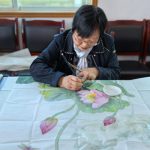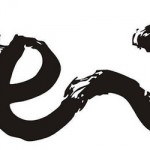
喜欢探究历史的多伦多人有福了!安省皇家博物馆(Royal Ontario Museum)将于明日开始展出Pompeii: In the Shadow of the Volcano,这是非常值得一看的。为何这么说呢?小编当年在欧洲留学时,有幸前往Pompeii体验过,尽管它在意大利的最边沿,坐车花了不少时间,但这一趟旅行很值得。当看到当年火山爆发,将Pompeii毁于一旦,仅留下断墙残壁的现场时,我的唯一感动就是震撼!在哪里,你可以无穷想象昔日历史文明的辉煌。我相信ROM的展出,一定值得我期待。
The Royal Ontario Museum (ROM) presents the Canadian premiere of Pompeii: In the Shadow of the Volcano from Saturday, June 13, 2015 to Sunday, January 3, 2016. Displayed in the ROM’s Garfield Weston Exhibition Hall, Pompeii features approximately 200 artifacts that tell the dramatic story of an ancient city captured in time. Loaned by The Superintendence for Archaeological Heritage of Naples and the Soprintendenza Speciale di Pompei, Erocolano e Stabia, a number of objects have never before travelled outside Italy. These include several new copies of casts of those who perished in Pompeii, created using leading-edge 3-D technology.
Pompeii’s destruction is one of history’s most storied natural disasters. Nearly 2000 years ago—in Year 79—Mount Vesuvius, a seemingly inactive volcano in southern Italy, erupted with great force. Within 24 hours, the city of Pompeii vanished under metres of ash and falling debris, remaining hidden for nearly 1,700 years—until archaeological excavations uncovered the city nearly intact.
“This spectacular exhibition provides rare insight into daily life at the heart of ancient Rome. Offering visitors the opportunity to experience life in Pompeii under the threat of the volcano that destroyed it, Pompeii also emphasizes history’s relevance to our lives today. Our visitors will leave the exhibition with a better understanding of the striking – and ongoing – impact of natural disasters on our world,” said Dr. Mark Engstrom, Interim ROM Director and CEO.
THE EXHIBITION
The ROM’s curatorial team includes Paul Denis, Assistant Curator in the ROM’s World Cultures department; Dr. Kate Cooper, former Rebanks Fellow in Classical Archaeology; and Katherine Dunnell, Technician in the Museum’s Earth Sciences department.
Exploring Pompeii and its fate through six distinctive sections, the exhibition’s Introductory experience underscores what we know about the city and the ancient Romans who lived and died there. Three key displays establish that the exhibition’s focus is on those people, the volcano that buried them, and the wealth of objects remarkably preserved by the destruction. The volcano, introduced in this section, remains a looming, menacing presence throughout the exhibition. Here, visitors are able to touch a large piece of pumice from Mount Vesuvius.
From the mid-18th century, extensive excavations of Pompeii provided unparalleled knowledge of ancient Roman life. The exhibition’s Out of the Ashes examines the rediscovery, establishing that, with its eruption, Mount Vesuvius transformed a relatively minor Roman city into one of the world’s most famous archaeological sites. Pompeii is a veritable “time capsule” of well-preserved artifacts.
The people of Pompeii are the exhibition’s unique focus. Divided into two sections, The Living City features the greatest concentration of objects to explore the daily lives of its population. Public Life includes a pair of spectacular life-sized marble portrait statues of a young man and woman, as well as exquisitely carved statues of Roman gods in marble and bronze. Gladiators’ equipment reveals a popular entertainment, while tools and objects, including coins and scales, illuminate the city’s commercial activity. As the exhibition moves into Private Life, domestic scenes are portrayed. Villas lavishly decorated with large-scale wall paintings, intricate mosaics, and elegant furnishings; and gardens embellished with spectacular sculptures beautifully demonstrate Pompeians’ taste for luxury. Stunning jewellery of gold and precious stones and luxurious silver dining ware are among this section’s highlights. Entering the kitchen, visitors learn about the Pompeian diet; how they cooked and what they served. Poignantly, dishes holding carbonized figs and olives, preserved at the moment disaster struck, are displayed here.
The exhibition’s central dramatic moment comes with Time Runs out for Pompeii. An immersive experience engulfs visitors as the disaster’s chronology is explained and visitors learn how and why the eruption was so catastrophic. One of the exhibition’s most significant objects, Girl fastening her peplos (Peplophoros) is seen in this section. The life-sized, bronze statue, buried by the cataclysmic eruption, is an iconic, moving symbol of the vibrant city. “Her” presence is rendered more poignant by the inclusion of a survivor’s eyewitness account-one of history’s first-ever detailed scientific observation of a volcanic eruption-provided by the Roman author Pliny the Younger.
Finally, The Human Toll reveals the devastating loss of life. The dramatic story of discovery and preservation is enhanced as visitors encounter casts of the inhabitants of Pompeii at the moment of their demise. These people, whose lives were similar to ours in many respects, reveal life’s fragility in the face of natural disaster.
OTHER INFORMATION
Visitors of all ages can enhance their ROM experience with outstanding programming:
• ROM FNL encourages attendees to party like the ancient Pompeians in Toga! Toga!;
• Member previews on Friday, June 12 and Saturday, June 13 include guided tours, curatorial lectures, and a facilitated Ancient Rome experience;
• Big Weekends, Pompeii edition, offers activities for every member of the family;
• The extensive ROM Speaks series features internationally renowned speakers addressing many of the exhibition’s themes;
• Summer Club 2015 content highlights the exhibition prominently as will the autumn session of Saturday Morning Club;
• This fall, ROM Speaks: Signature Series features extraordinary musical performances and exceptional gastronomic experiences;
• ROM School Visits offer numerous options at both elementary and secondary levels focusing on the daily lives of Pompeii’s people as well as the volcanic eruption.
The exhibition boutique offers wares taking inspiration from Pompeii’s stunning objects and dramatic stories. Souvenirs and gifts include clothing, jewellery, decorative arts for the home and garden, as well as activity kits demystifying volcanoes and academic, and publications – including the exhibition souvenir guide – for both children and adults.










